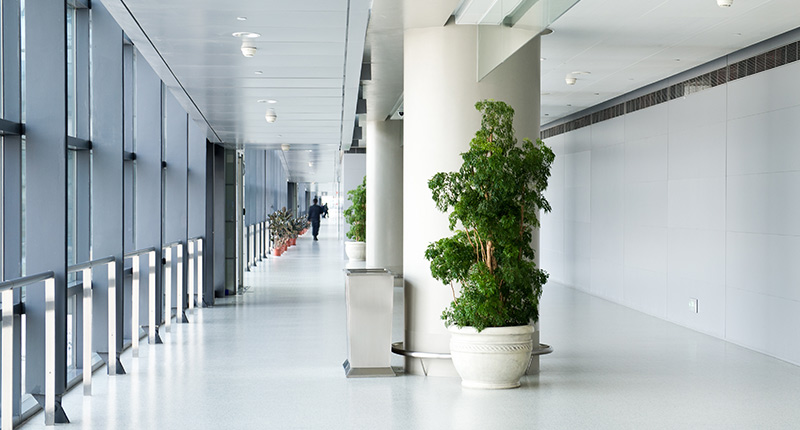
Testing concrete slabs for moisture is a standard requirement today for nearly all new construction, both commercial and residential. But what about existing slabs? When replacing flooring on older buildings, measuring moisture may be even more important than with newly constructed floors.
Think about a slab that was poured 20, 30 or 40 years ago. Waterproofing technology was not where it is today. A waterproofing membrane may not have been installed at all. A moisture barrier installed before the mid-1990s may not be up to the current ASTM standards and may not perform as well as contemporary solutions. In some cases, a simple poly sheet may be all that separates the slab from ground moisture. Over time, a substandard membrane can break down or become perforated, reducing or eliminating its ability to control moisture intrusion.
For these reasons, many experts promote moisture testing with any concrete floor before installing or replacing flooring. The standard approach is to use a relative humidity (RH) probe inserted via drilled holes as prescribed by ASTM D4263-83. Per the standard, the relative humidity should be below 75% throughout the slab, if flooring is to be installed on top of it. The standard states that "all slabs shall be tested regardless of age or grade."
Older tests, such as the "plastic sheet" method, where humidity is measured beneath a plastic sheet attached to the floor, or conducting calcium chloride testing, have fallen out of favor due to the increased accuracy of the probe method described above.
While humidity testing is important, it should not be considered the "be all and end all" of moisture prevention. In a recent white paper by testing and inspection professional George Donnelly, the author warns that data collected from in-situ RH tests is often incorrectly collected and/or misinterpreted. He cites examples of data produced by probe readings taken after just minutes of exposure, rather than the specified 72 hours. Moreover, Donnelly emphasizes that test results are subject to change unless there is an effective moisture vapor retarder/barrier is in place. Therefore, such test results should not be used in isolation to predict concrete drying behavior for any concrete slab without an effective vapor barrier.
One reason contractors may be wary of testing older slabs is concern about how excess moisture can be mitigated in an existing on-ground slab. Fortunately, there are moisture remediation strategies that are both effective and simple to install. We'll discuss some of these strategies in future articles.
Tags
- Airports
- Architects
- Arts & education
- Commercial buildings
- Contractor
- Engineer
- Flooring
- KOVARA
- Museums
- Repair and Renovation
- Residential buildings
- Retail buildings
- Schools
- Sports stadiums
- Structural Solutions
- Subcontractor
- VERSASHIELD